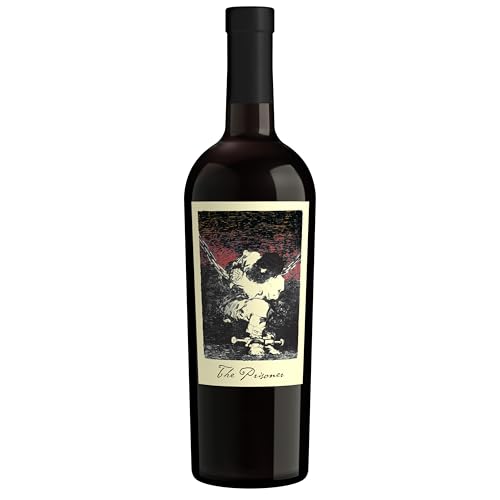



Yes, consuming dark-colored beverages can lead to a noticeable change in the appearance of bowel movements. This phenomenon is often attributed to the compounds found in these drinks, particularly those that are rich in polyphenols. These substances can interact with digestive processes, resulting in darker fecal matter.
When indulging in such beverages, it’s essential to monitor any changes. If you notice a persistent alteration in coloration, it could indicate a need for further investigation. While occasional shifts can be harmless, consistent changes may warrant a conversation with a healthcare provider to rule out any underlying issues.
In my experience, maintaining a balanced diet and staying hydrated can mitigate any adverse effects from these drinks. Pairing them with lighter foods can also help in maintaining digestive regularity. Remember, awareness of your body’s reactions is key to understanding what suits you best.
Can Red Wine Alter Stool Color?
Yes, consumption of this beverage can lead to darkened feces. The pigments present in the drink, particularly anthocyanins, are responsible for this change. These compounds can interact with digestive processes, resulting in a noticeable shift in color.
Individuals with a sensitive digestive system may experience this effect more prominently. Additionally, the presence of tannins and other natural substances might contribute to alterations in bowel output. It’s essential to monitor any significant or persistent changes, as they could indicate other underlying issues.
Hydration plays a crucial role in digestion. Ensuring adequate fluid intake can help mitigate some of the darker coloration resulting from this beverage. Pairing meals thoughtfully can also influence how your body processes these compounds.
If you notice a consistent shift toward a darker hue in your feces after indulging, consider moderating your intake or consulting a healthcare professional to rule out any health concerns.
Understanding the Components of Red Wine

Phenolic compounds play a significant role in the characteristics of this beverage. These include tannins, which provide structure and astringency, and anthocyanins, responsible for the deep colors. The balance of these elements influences not only flavor but also the potential physiological effects on digestion.
Alcohol and Sugar Content
Alcohol levels can vary, often ranging from 12% to 15%. Higher concentrations may intensify the impact on the digestive system. Residual sugars contribute sweetness and can affect fermentation processes, influencing the overall experience of consumption.
Acids and Their Functions

Organic acids, such as tartaric and malic, contribute to the acidity and freshness. Acidity is crucial for balance, enhancing flavors and promoting digestion. A well-structured acidity can aid in the absorption of nutrients and improve overall gut health.
Understanding these components can provide insights into how different varieties may interact with the body, potentially affecting digestive outcomes. Knowledge of the specific elements in various selections enables better choices and enhances the enjoyment of these complex beverages.
How Red Wine Affects Digestion and Stool Color
Moderate consumption of this beverage can lead to noticeable changes in digestion and the appearance of excrement. The presence of tannins and pigments can darken waste products, often due to the interaction with digestive enzymes and gut bacteria.
Factors Influencing Digestion
- Tannins: These compounds can affect the gastrointestinal tract, potentially leading to altered absorption rates and changes in waste color.
- Alcohol Content: Ethanol can irritate the digestive lining, which may result in changes in bowel movements.
- Polyphenols: Antioxidants found in this drink can interact with gut flora, impacting digestion and possibly altering color.
Recommendations for Healthy Digestion
- Maintain hydration to support digestive processes.
- Pair with fiber-rich foods to mitigate any digestive discomfort.
- Monitor the quantity consumed to minimize any adverse effects on digestion.
While enjoying this delightful beverage, be mindful of its potential effects. If you notice significant changes in your bowel movements, it might be wise to consult a healthcare professional. Exploring different options for cleaning and maintaining your space, like a commercial grade pressure washer, can also keep your environment pleasant when indulging in these experiences.
Other Foods and Substances That Can Darken Stool
Several items in the diet can result in a darker appearance of waste. Consuming substantial amounts of black licorice may lead to this effect due to its natural pigments. Similarly, foods rich in iron, such as red meats, dark leafy greens, and iron-fortified cereals, can also contribute to a deeper color.
Additionally, certain fruits like blueberries, blackberries, and prunes possess anthocyanins, which can tint the digestive output. Beets are notorious for causing a reddish hue, which may sometimes be mistaken for blood, creating confusion. Foods with strong dyes, like artificially colored candies or beverages, can play a role as well.
Some medications, especially those containing bismuth subsalicylate, commonly used for upset stomachs, can darken waste. Supplements with iron or activated charcoal also have this effect. It’s vital to observe any dietary changes or medication adjustments that could influence color. If there are concerns, consulting a healthcare professional can provide clarity.
When to Consult a Doctor About Stool Color Changes
Seek medical advice if you notice persistent darkening of bowel movements lasting more than a couple of days without any obvious dietary cause. If accompanied by symptoms such as abdominal pain, nausea, vomiting, or any signs of bleeding, immediate consultation with a healthcare professional is critical.
Changes in color can indicate underlying health issues. If you experience fatigue, dizziness, or weakness alongside altered excrement, it’s advisable to reach out to a doctor. These symptoms may suggest possible internal bleeding or gastrointestinal disorders that need professional assessment.
Monitor any correlation between ingested items and color shifts. If you suspect certain foods or drinks are the cause but the discoloration continues after they are eliminated from your diet, this warrants further investigation. A healthcare provider can perform necessary tests to rule out serious conditions.
Remember, timely communication with a medical expert can be vital in addressing potential health concerns effectively. Don’t hesitate to discuss any uncertainties regarding digestive health with a professional.
Tips for Monitoring Your Digestive Health
Keep a daily log of your bowel movements to identify patterns or changes. Note the color, consistency, and frequency, which can provide insight into your digestive health.
Stay hydrated. Drinking plenty of fluids is crucial for maintaining optimal digestion and can help prevent constipation, which may lead to abnormal appearances in excrement.
Incorporate fiber-rich foods into your diet. Whole grains, fruits, and vegetables promote regularity and can enhance the overall quality of your digestive system. Aim for a variety of colors and types to ensure a wide range of nutrients.
Limit the intake of foods known to alter fecal appearance. Certain items, such as beets, dark leafy greens, and certain berries, may influence color. Be mindful of this when tracking changes.
Pay attention to any accompanying symptoms. If unusual changes are accompanied by discomfort, pain, or other gastrointestinal issues, it may warrant further investigation.
Consider consulting with a healthcare professional if significant changes persist. A specialist can provide tailored advice and recommend appropriate tests to rule out any underlying conditions.
| Tip | Description |
|---|---|
| Daily Log | Record the color, consistency, and frequency of bowel movements. |
| Hydration | Ensure adequate fluid intake to support digestion. |
| Fiber Intake | Include diverse fiber sources to promote regularity. |
| Monitor Foods | Be aware of items that may change fecal color. |
| Symptoms | Watch for pain or discomfort alongside color changes. |
| Consult Professional | Seek medical advice for persistent or concerning changes. |
FAQ:
Can drinking red wine cause my stool to turn black?
Yes, consuming red wine can lead to black stool in some cases. This is primarily due to the pigments and tannins found in red wine, which may alter the color of your stool. Additionally, if the wine is consumed in large quantities, it might affect digestion and the gut’s absorption processes, contributing to changes in stool color. However, if black stools persist or are accompanied by other symptoms, it is advisable to consult a healthcare professional.
What are the reasons for black stool besides drinking red wine?
There are several reasons why stool may appear black aside from red wine consumption. One common cause is the ingestion of certain foods, such as black licorice, blueberries, or beets, which can darken stool. Iron supplements and medications containing bismuth subsalicylate, like Pepto-Bismol, can also result in black stool. More serious causes include gastrointestinal bleeding, where blood from the upper digestive tract can make stool black and tarry. If you notice persistent black stool, especially if accompanied by pain or other symptoms, it’s important to seek medical advice.
How can I differentiate between harmless black stool and a sign of a health issue?
Differentiating between harmless black stool and a potential health issue involves assessing additional symptoms and the circumstances surrounding the stool change. If black stool occurs after consuming specific foods or beverages, such as red wine or iron supplements, it may not be a cause for concern. However, if the black color is accompanied by symptoms like abdominal pain, nausea, vomiting, or changes in bowel habits, it may indicate a more serious condition, such as bleeding in the gastrointestinal tract. In such cases, consulting a healthcare provider is recommended for proper evaluation and diagnosis.








